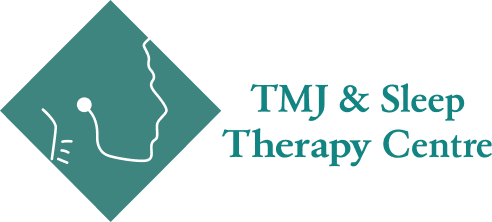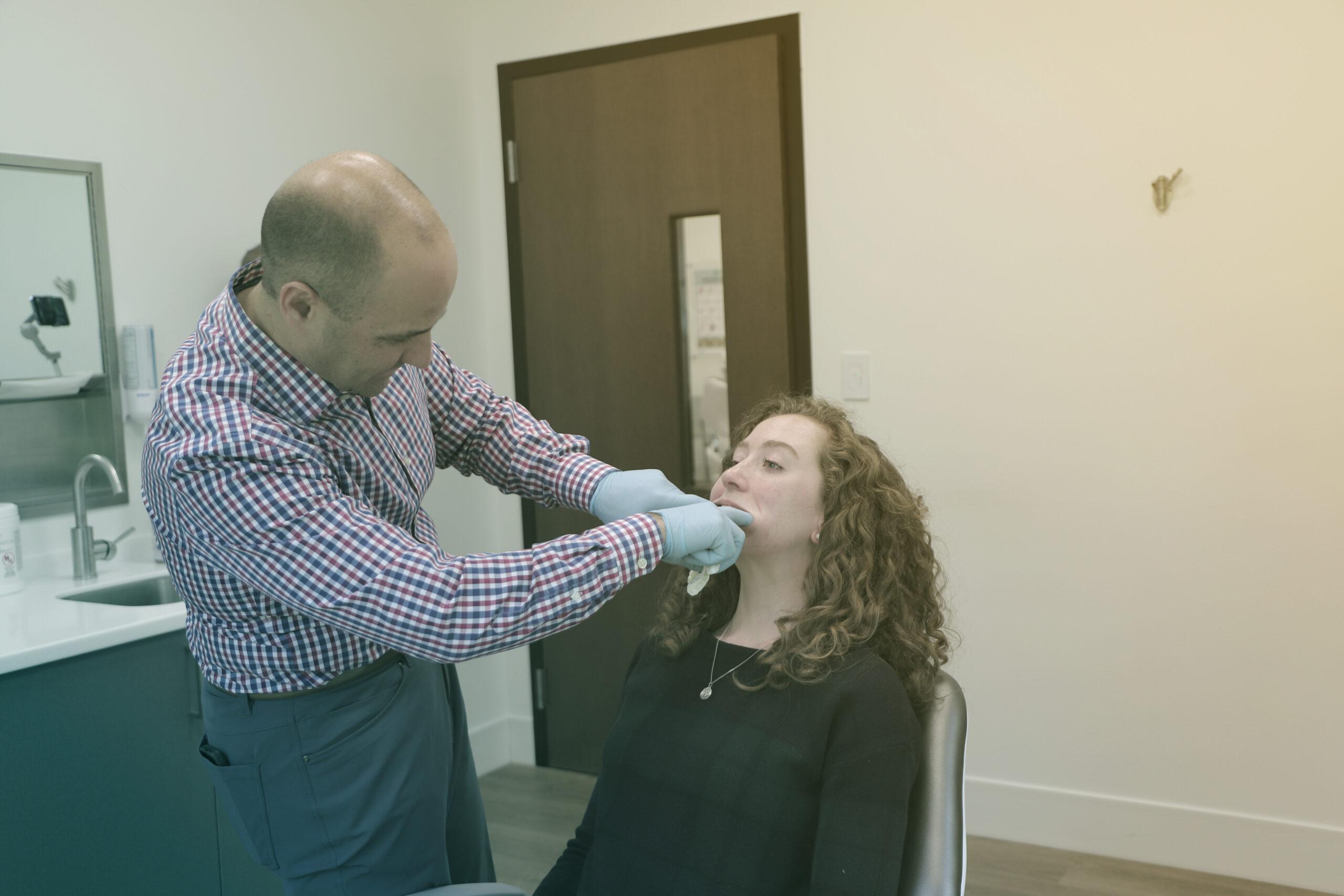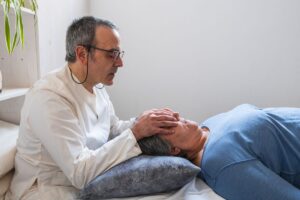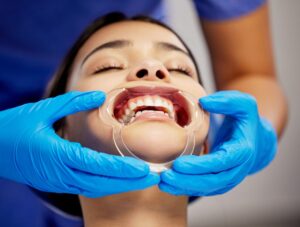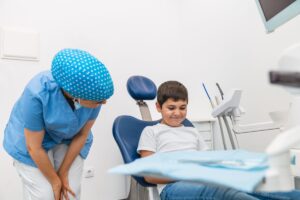If you or your child experiences mouth breathing, tongue thrust, speech challenges, or jaw pain, the underlying issue might not be dental—it may be muscle dysfunction.
At TMJ & Sleep Therapy Centre Indiana, we use myofunctional therapy to retrain the muscles of the face, mouth, and tongue for healthier breathing, posture, and oral function. It’s a non-invasive, exercise-based treatment that can make a big impact on everything from sleep quality to TMJ relief.
Whether you’re struggling with facial pain, poor sleep, or orthodontic relapse, myofunctional therapy helps restore proper muscle patterns for lasting improvement.
What Is Myofunctional Therapy?
Myofunctional therapy is a therapeutic program that uses exercises to correct improper habits of the tongue, lips, jaw, and face.
It addresses conditions like:
- Mouth breathing
- Incorrect tongue posture
- Tongue thrust (improper swallowing)
- Open-mouth posture
- Weak facial muscles
- TMJ dysfunction
These patterns often start early in life and can contribute to problems with sleep, speech, dental development, and even posture. Myofunctional therapy retrains the muscles to work in harmony—supporting healthy growth, breathing, and movement.
Why Does Oral Function Matter?
The muscles of the tongue and face do more than help you chew and speak—they play a key role in:
✅ Shaping the airway
✅ Guiding jaw and facial development
✅ Supporting nasal breathing
✅ Stabilizing orthodontic outcomes
✅ Reducing tension in the TMJ and neck
When muscle function is compromised, the body compensates in ways that can lead to chronic issues, like sleep-disordered breathing, jaw pain, poor posture, and bite problems.
Who Can Benefit from Myofunctional Therapy?
Infants and Children:
- Tongue tie recovery
- Speech delays
- Orthodontic preparation
- Mouth breathing or snoring
- Thumb sucking or pacifier use
Teens and Adults:
- TMJ pain or jaw instability
- Tongue thrust or poor swallowing patterns
- Posture-related discomfort
- Sleep apnea or airway issues
- Orthodontic relapse
Whether you’re 4 or 40, retraining the orofacial muscles can support more efficient breathing, better alignment, and improved quality of life.
What Conditions Can It Help With?
✅ TMJ dysfunction
✅ Orthodontic relapse or instability
✅ Obstructive sleep apnea
✅ Tension headaches or facial pain
✅ Forward head posture
✅ Speech and articulation issues
✅ Snoring and mouth breathing
We often use myofunctional therapy alongside other treatments such as oral appliances, laser frenectomies, and craniofacial development strategies.
What Does Therapy Involve?
Myofunctional therapy is customized for each patient and typically involves:
- Initial Evaluation
- We assess tongue posture, lip seal, breathing pattern, swallowing, and facial movement.
- Exercise Plan
- Patients complete a series of daily exercises to strengthen and coordinate facial and tongue muscles.
- Progress Monitoring
- Routine visits or virtual sessions help track improvement, adjust the plan, and reinforce habits.
- Integration with Other Treatments
- Myofunctional therapy often enhances outcomes for orthodontics, sleep apnea treatment, or tongue-tie releases.
The Four Goals of Myofunctional Therapy
- Nasal Breathing – Teaching the body to breathe through the nose 24/7 improves oxygen levels and reduces inflammation.
- Proper Tongue Posture – A tongue that rests on the roof of the mouth supports airway health and balanced facial growth.
- Lip Seal – Keeping lips closed at rest prevents dry mouth, snoring, and long-term orthodontic issues.
- Correct Swallowing Pattern – Proper swallowing reduces pressure on teeth and TMJs while aiding digestion and speech.
Achieving these four goals can lead to major improvements in function and health—even for issues you didn’t realize were related to oral posture.
FAQs About Myofunctional Therapy
Is this therapy only for kids?
No! While it’s very effective in childhood, adults can benefit greatly—especially those with TMJ problems, sleep apnea, or poor posture.
How long does treatment take?
Most therapy programs last 3–6 months, but it depends on the condition being treated and the patient’s consistency with exercises.
Do I need to be referred?
No referral is necessary. If you’re experiencing relevant symptoms, you can contact us directly for a consultation.
Is it painful or invasive?
Not at all. The exercises are gentle and easy to perform at home with guidance from our team.
Support Healthy Function from the Inside Out
Whether you’re looking to correct mouth breathing, ease TMJ pain, or set your child up for healthy facial development, myofunctional therapy offers a proven, non-invasive path to lasting relief and improved function.
At TMJ & Sleep Therapy Centre Indiana, our team is trained in airway-focused care and works closely with patients of all ages to correct dysfunction and support long-term wellness.
👉 Request an Appointment to schedule a myofunctional therapy consultation today.
